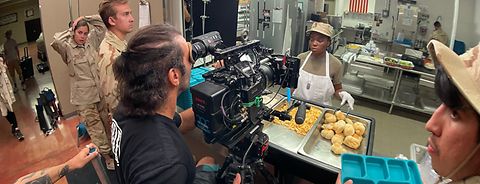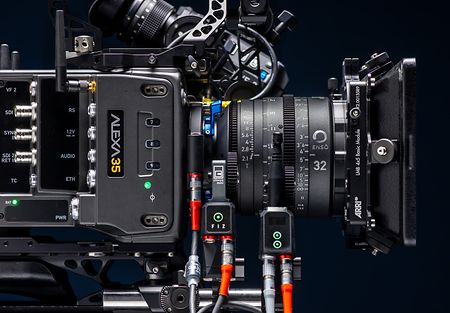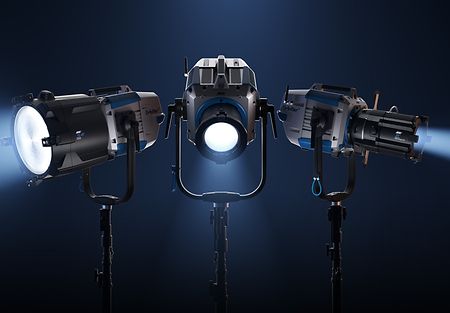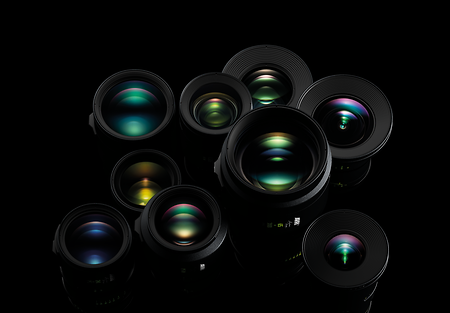São Paulo native Dennis Zanatta came to the U.S. as an in-house cinematographer for TV Globo. Since earning a Master of Fine Arts (MFA) in Cinematography at the American Film Institute, he has been based in Los Angeles. He is a member of the Brazilian Society of Cinematographers (ABC). His credits include numerous documentaries and commercials as well as the feature films “Loulou” and “Detained,” and he won Best Cinematography at the Indie Series Awards for his work on the narrative web series “In Absentia,” currently streaming on Amazon Prime.
Zanatta’s most recent project is a short film titled “Grace,” which tells the true story of Shoshana Johnson, the first black female prisoner of war in American history. Sitting down with ARRI, he shares his thought process on the film’s imagery.

DP Dennis Zanatta capturing “Grace,” a short film about the first black female prisoner of war in US history
Tell us about the genesis of your short film “Grace.”
Shoshana Johnson was born in Pedro Miguel, Panama, and as a child moved to the U.S. with her family. She eventually joined the military and was stationed in El Paso, Texas, the same hometown as our director Diego Lopez. During the Battle of Nasiriyah, she suffered bullet wounds to both ankles and was captured by Iraqi forces. She was held prisoner in Iraq for 22 days along with five other members of her unit. She was freed in a rescue mission conducted by United States Marine Corps units.
After interviewing Shoshana for another project, Diego wrote and directed “Grace,” a short film based on her book “I'm Still Standing: From Captive U.S. Soldier to Free Citizen--My Journey Home,” under the condition that the film be as true to the book as possible.
Diego Lopez is currently writing a scripted TV series with more detail about Shoshana’s story.
What were the logistical challenges involved in getting the film made?
Everything was out of our own pockets. We were asking favors to get the locations. We recruited support from the local community in El Paso. We found the locations about two hours away, in Las Cruces, New Mexico, where there is an actual prison that is now a museum, as well as a military base with a model Iraqi city. It was amazing to be in the middle of nowhere, in the desert. It’s a very interesting place. We shot in July, so it was extremely hot, which was an important part of Shoshana’s experience described in the book.

DP Zanatta used hard light from outside the prison to indicate the heat endured by the main character
What was your thought process when it came to choosing camera and lenses?
Initially, I thought about shooting 16 mm film. My main film references were “The Hurt Locker” and “Jarhead.” I thought we could go that route and shoot as natural as possible. But Kodak was unable at that time to provide any 16 mm film. I saw some low light sensitivity tests shot on the new ALEXA 35 in a room that was so dark I could barely see the camera. Diego and I were able to shift the production dates to work with the availability of the camera, which we paired with ARRI Signature Prime lenses. I’ve always been a little skeptical about large-format lenses, which seem a little too modern, especially for what we had in mind on this project. However, when I used the Signature Primes on a commercial shoot, I was very impressed with the look, and how beautiful they were even though they are modern lenses. It’s a very cinematic image and very pleasing to my eye.
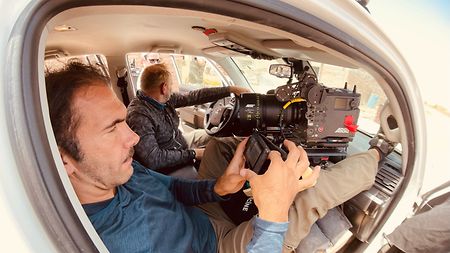
The filmmakers shifted the production dates to work with the availability of the new ARRI ALEXA 35
What are the other characteristics of the image?
Because I initially wanted to shoot on film, I was very excited to use the ARRI Textures, which vary different parameters like grain, contrast, and sharpness in the processing. My reactions were very positive. I think that’s what really sets this camera apart. After testing, I felt that the Nostalgia texture was closest to the look of 16 mm film. We used three different LUTs depending on the situation, the 31-12, 61-10 and the 41-10. Of course, in my opinion, there’s no better color science than with ARRI. I have always liked the colors and the skin tones on ARRI cameras. But, as a cinematographer, the textures allow you to put your own stamp on the images, to create another layer that make your project unique, with your own signature. I feel that since it’s something you do on the camera, it returns control of the image to the cinematographer. It’s there in post and you can’t change it too much, which is how it was in the film days. Prep is the right time to make your artistic decision. That’s how you get the look you want for your film.

“As a cinematographer, the ARRI Textures allow you to put your own stamp on the images, to create another layer that makes your project unique,” says DP Zanatta
How did the camera hold up under the harsh conditions?
I was worried about taking the ALEXA 35 to this environment. It was extremely hot and dry in the desert, but, believe it or not, inside the jail it was incredibly humid. We definitely put the camera in different challenging situations, and it performed really well. We had four days with the actor. On the fifth day, we shot some desert landscapes and some slow motion for a dream sequence or memory fragments—more artistic moments. The camera never stopped working, and the image we were getting was excellent. I was telling the producer that with a camera like this, you don’t need much. As long as you frame and compose well, that 3D image tells the story. You can rely on the camera to give you so much. You don’t have to start adding things to make the image better than it already is.

Surprisingly given the desert setting, the prison interiors were extremely humid
What was your approach to lighting?
For exteriors, we mostly went with existing natural light with some shaping and control. Inside the jail was where I could use lighting fixtures. For scenes where hard sunlight is coming through the hallway or a window, I used the ARRI Orbiter. It’s a light that is so flexible,it can be used for almost anything. You can dial the colors in, and everything can be done on an iPad. It has great output and looks natural,not sourcey. I’m always worried about if a light feels natural enough; we were very lucky to have the Orbiter with us. I wanted the jail to be very gritty and dark, and I didn’t want fluorescents. There’s no power in an Iraqi jail, so the Orbiter with a 30° Open Face Optic was giving me my sunlight.
What’s next for “Grace”?
The film is currently being edited, and we hope to use it as a selling tool to convince the networks that this could be a TV series. The idea would be to tell the story from the perspective of seven or eight points of view, with Shoshanna’s story as the anchor. We’re also hoping to get it into festivals.

Zanatta (at far left) and the team behind “Grace”
